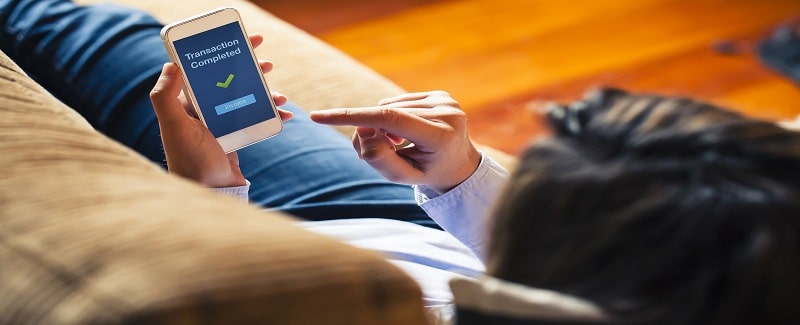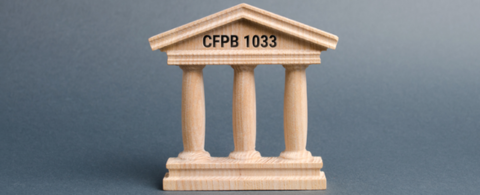Are You Adapting to Consumer-Driven Payments?
Posted by Nathan Marquiss on 22 Feb 2018


Over the past decade, technology has infiltrated consumers’ lives in a profound way. Consider that in 2011, only 35% of Americans owned a smartphone. As of 2018, that number climbed to 77%. Americans ages 18-29 are almost completely saturated with smartphones, with 94% of young adults owning them. And let’s not forget about tablets. Over that same seven-year period, tablet ownership jumped from approximately 10% to 53%. (Source: Pew Research Center)
Mobile commerce is rising…
This explosion of mobile technology has changed how consumers gather information, communicate with one another, and conduct commerce. While ecommerce has been around since the early days of the internet, more and more consumers are paying for goods and services with their mobile devices. In fact, Business Insider projects that by 2020, mobile commerce will account for 45% of the total ecommerce market in the United States, with an approximate value of $284 billion.
…and creating payments disruption
Mobile technology has also changed consumers’ expectations for how they pay. Again, thinking back a decade ago, traditional banks and financial institutions were the mainstays of consumer finance and money movement. Since that time, new payments technology has emerged from industry disruptors that are focused on changing the game. Payments can be made with the tap of a smartphone via digital wallets, money can be transferred easily among individuals through peer-to-peer (P2P) payments, and formerly cash-dependent transactions like parking meter fees can be paid through apps. As more and more technology fuels alternative payment methods, the old “top of wallet” mindset has evolved to become “preferred payment method.”
This plethora of options can provide highly efficient and personalized experiences for consumers. But it can also create headaches for retailers and billers. With so many ways to conduct commerce and make payments, expectations may vary wildly by consumer. And trying to keep up with their changing expectations can feel like an insurmountable task for many businesses. According to Baymard Institute, payment issues are among the top reasons for consumer frustration.
How can retailers and billers adapt to the new normal?
The truth is, there’s no “one-size-fits-all” model for accepting payments. Years ago, payments strategies weren’t as dynamic as they are today. The pace of change was slower, and trends were more visible over time. There were fewer channels and methods to account for when managing a payments strategy.
However, in today’s world, payments strategies must be highly fluid and respond quickly to new trends that develop seemingly overnight. Consumers’ preferences can be so dynamic that they may vary according to the specific retailer or biller. And customer experiences must respond seamlessly to meet their diverse needs.
So much of the business world revolves around the old mantra, “If it ain’t broke, don’t fix it.” Even as it relates to the receivables that companies depend on for cash flow, adoption of new payments technology oftentimes takes a backseat to other business initiatives. When retailers and billers face resource constraints that prohibit them from quickly responding to this changing landscape, collaborative partners can offer the technology that’s needed to meet the needs of modern consumers.
The ripple effect of negative customer experiences
It’s important to remember that savvy consumers have easy access to tools that can broadcast one negative experience to a large population of potential customers. Twitter, for example, gives users 280 characters to deliver brand-specific messages to over a billion audience members. Customers can post negative reviews on a variety of websites and search engines. And word-of-mouth travels quickly on social media platforms.
For retailers and billers, technology that facilitates positive customer interactions and counteracts negative experiences before they happen is more important than ever. Enhancing your payments strategy to offer quicker, more convenient ways to pay is just one way of streamlining the customer experience. Not only can this create positive brand interactions for your end users, it can also empower your business to collect its money faster.
Conclusion
Customers’ expectations are changing rapidly, and businesses must habitually find new ways to serve them. Commerce and payments technology that’s used widely today wasn’t even in existence yesterday and this rapid evolution continues to drive a new era of customer relationships. Adopting a comprehensive yet easily adaptable payments strategy has never been more important and will only continue to grow in importance over time.
Whether retailer, biller, or bank, we’re all stakeholders in today’s ecommerce world. It’s up to all of us to come together and provide new customer experiences that are fast, secure, and, most importantly, satisfactory to our patrons.
The Bottom Line: Technology is changing consumers’ expectations when it comes to their payments. Retailers and billers of all sizes can find it challenging to stay at the forefront of these changes. When they face resource constraints that prohibit them from responding quickly, collaborative partners can offer the technology that’s needed to evolve strategy and deliver tailored customer experiences.
Schedule A Personalized Demo
Schedule a Free Consultation





